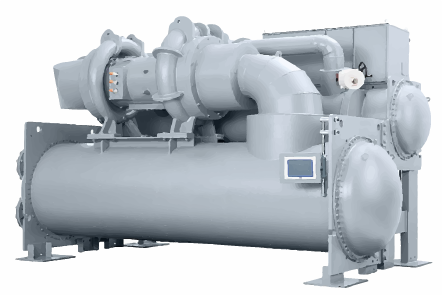Looking for an energy-efficient chiller?
In Canada, Chillers must meet minimum performance standards set by Canada’s Energy Efficiency Regulations.
Chiller technology and energy efficiency

A chiller is large-capacity cooling equipment—180,000 Btu/h and up—used in commercial and industrial applications. The chiller removes heat from a liquid, e.g., water or another refrigerant, via a vapor-compression or absorption refrigeration cycle. The liquid can then be circulated through a heat exchanger to cool air, materials or equipment as required.
Today’s industrial chillers are designed to cool the refrigerant with water from a cooling tower rather than with ambient air. Water-cooled chillers are 15 percent more energy efficient than air-cooled units. Since they use smaller condensers and require no fans, water-cooled units are also smaller and less noisy than air-cooled models.
Energy efficiency in chillers is measured by: minimum coefficient of performance (COP) or integrated part-load value (IPLV).
Regulations set the energy efficiency minimum
Chillers are subject to Canada’s Energy Efficiency Regulations, which set a performance standard for their energy efficiency. This helps to eliminate the least efficient products from the Canadian market.
The Regulations apply to: vapour-compression chillers with cooling capacities of less than 8,800 kW (2,500 tons) with water condensers and less than 700 kW (200 tons) designed for use with air condensers; and absorption chillers of up to 5600 kW (1,600 tons).
When buying a chiller, ensure it has the mandatory energy efficiency verification mark, and view the model’s energy efficiency report.
- View the standard for chillers in Canada.
- Learn more about how Canada’s Energy Efficiency Regulations work.
Detailed information for manufacturers
Additional information for retailers